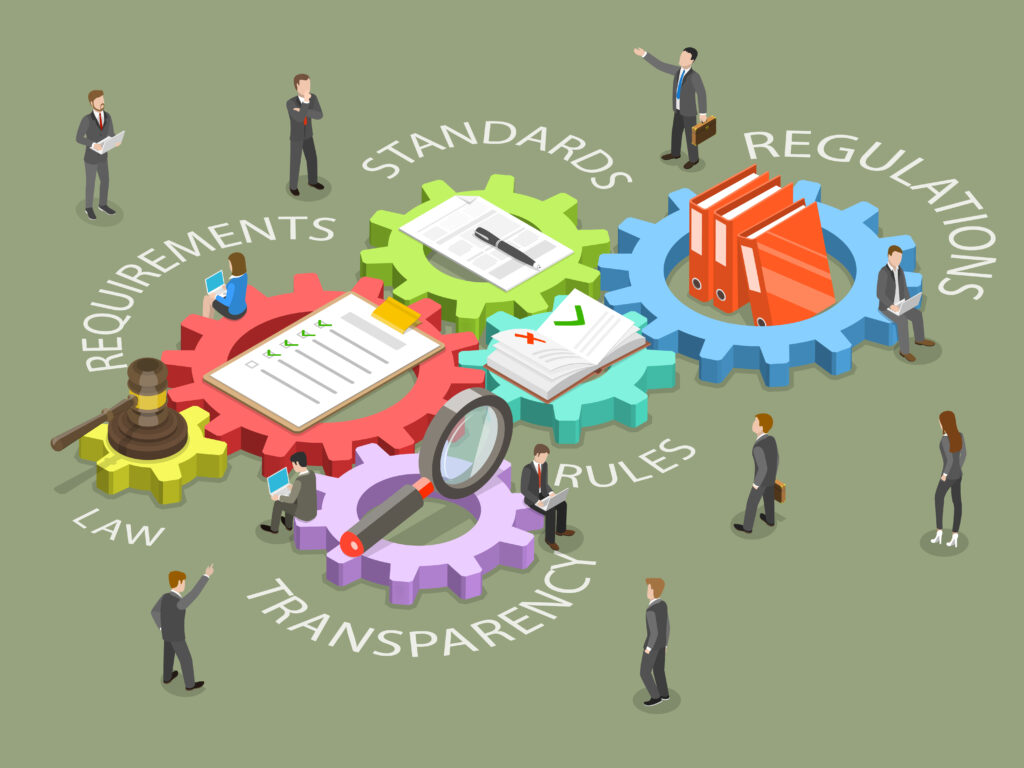As our data environments become increasingly complex, it is imperative to strengthen data security and governance. Implementing organization-wide policies and frameworks that ensure real-time compliance and synchronization across all systems allows companies to mitigate risk, uphold data integrity, and instill confidence in data-driven decisions. With robust security protocols and governance in place, businesses can fully leverage data analytics while safeguarding sensitive information assets. This article explores best practices for implementing enhanced data security and governance to empower organizations in the digital age.
The Growing Need for Enhanced Data Security and Governance
Increasing Volumes and Sources of Data
- Organizations today have access to massive volumes of data from various internal and external sources, including business applications, web, and social platforms, IoT devices, and more. Managing and securing this data is a complex challenge that requires robust governance policies and security measures.
Data Protection Regulations
- Regulations like GDPR and CCPA require organizations to implement stringent controls around personal data collection, use, and disclosure. Non-compliance can lead to major legal and financial consequences. Establishing data governance frameworks helps ensure compliance with data protection laws and builds consumer trust.
Mitigating Security Risks
- As data environments become more complex, so do the risks to data security. Without proper governance and security protocols in place, data can be exposed to threats like data breaches, leaks, and cyber-attacks. Rigorous data access control, encryption, monitoring, and auditing procedures reduce vulnerabilities and protect sensitive data.
Driving Data-Based Decisions
- High-quality data is essential for data-driven decision-making. Comprehensive data governance policies help ensure data integrity, accuracy, and consistency across systems. This results in a “single source of truth” that decision-makers can rely on to gain actionable business insights and make well-informed choices.
In summary, enhancing data security and governance is crucial for organizations to achieve compliance, mitigate risks, ensure high data quality, and fully leverage data assets. By implementing global policies, standards, controls, and monitoring procedures, organizations can establish a consistent and strategic approach to data management across the enterprise. With strong data governance and security foundations in place, organizations are well-positioned to gain valuable insights and drive innovation.
Implementing Global Data Security Policies
Establish Data Governance Frameworks
- To ensure consistent data security practices across regions and departments, organizations should implement comprehensive data governance frameworks. These frameworks define data management policies, controls, and accountability to align data governance with business objectives. They help determine data ownership, classify sensitivity levels, and standardize security controls.
Conduct Regular Risk Assessments
- Conducting regular risk assessments is key to identifying and mitigating potential data security threats. These assessments analyze vulnerabilities in data infrastructure and evaluate the likelihood and impact of data breaches. Organizations can then implement additional controls to address high-priority risks. Risk assessments should cover all data storage, processing, and transmission systems.
Enforce Strong Access Management
- Enforcing strong access management is essential to limiting data access to authorized users only. This includes implementing role-based access controls, strong password policies, two-factor authentication, and audit logs to monitor access. Access should be granted based on the principle of least privilege, restricting users to only the data and systems required for their role.
Train Employees in Security Best Practices
- Employees are often considered the weakest link in data security, so ongoing security awareness and training are critical. Employees should understand data handling policies, how to spot phishing and social engineering attempts, and how to report suspected security incidents. Regular training helps build a culture of data security and ensures employees have the knowledge to handle data appropriately.
Monitor for Security Incidents Continuously
- Continuous monitoring allows organizations to detect data security incidents quickly and respond before major damage occurs. Monitoring should cover all data infrastructure and include log analysis, vulnerability scanning, and integrity checks. Incident response plans help coordinate containment, eradication, and recovery in the event of a data breach. Catching incidents early minimizes data loss and legal consequences.
Continuous improvement in data security and governance is key to building resilient systems and maintaining customer trust. By establishing frameworks, controls, and monitoring, organizations can enhance data protection and compliance over the long run. However, data security is an ongoing process that requires frequent re-evaluation as environments and regulations change.
Building Data Governance Frameworks

- To enhance data security and governance, organizations must implement comprehensive data governance frameworks. These frameworks help establish consistent policies, standards, and procedures for managing data across the enterprise.
Defining Data Governance Roles and Responsibilities
- A successful data governance framework starts with clearly defining roles and responsibilities. Key roles include data stewards, who oversee data standards; data custodians, who manage data storage and security; and data consumers, who access and analyze data for business use. These roles must work together with proper oversight and accountability to enforce data policies.
Establishing Data Policies and Standards
- Organizations need clear policies and standards to govern data collection, storage, security, and use. Policies should address data privacy, security, and compliance requirements. Data standards ensure consistency in data definitions, values, and formats across systems. Standards enable interoperability between data sources and help avoid redundancies. Regular audits and reviews are required to maintain policy and standards compliance.
Providing Data Governance Tools and Processes
- To operationalize data governance frameworks, organizations require dedicated tools and processes. Data governance software provides functionality for policy management, data mapping, data quality monitoring, and issue tracking. Well-defined data governance processes detail how policies and standards will be implemented, monitored, and enforced in daily data management activities. Process documentation and training are essential for consistency and accountability.
With comprehensive data governance frameworks in place, organizations can enhance security, optimize data use, and build trust in information. However, data governance is an ongoing initiative that requires continuous improvement to adapt to changes in technology, regulations, and business requirements. Reviewing and revising data governance frameworks regularly is key to long-term success.
Ensuring Real-Time Synchronization and Compliance
To guarantee data security and governance across increasingly complex environments, organizations must implement global policies and frameworks that synchronize controls and enforce compliance in real-time across all systems
Establishing Comprehensive Policies
- The first step is developing overarching data security and governance policies that account for current and emerging risks. These policies should define data classification, access controls, encryption requirements, and retention policies. They must also establish the governance framework, designating key roles and responsibilities for data oversight.
Automating Policy Enforcement
- With policies in place, automation is key to real-time synchronization and compliance. Solutions like data loss prevention, access management, and data governance tools can automatically discover, classify, monitor, and protect data across the organization. They enforce policies as data moves, providing a consistent and auditable approach to security and governance.
Monitoring and Reporting
- Continuous monitoring and reporting provide insight into the effectiveness of data security and governance initiatives. Dashboards track metrics like data classification coverage, access policy violations, and encryption rates to identify potential risks. Regular reports detail policy exceptions, access anomalies, and other non-compliant events that require remediation. Together, monitoring and reporting achieve transparency and trust in data policies and controls.
Adapting to Change
- Data security and governance are not set-it-and-forget-it propositions. Organizations must review and update global policies and frameworks regularly to address evolving risks, systems, data types, access models, and regulations. Likewise, automation solutions require ongoing tuning to sync controls with policy changes. With continuous adaptation, organizations can ensure real-time compliance with the latest data security and governance mandates.
In summary, synchronizing data security and governance across today’s complex data environments demands comprehensive policies, automation, monitoring, reporting, and adaptation. This multi-layered approach helps mitigate risks, ensure data integrity, and build trust in data-driven business processes. With governance that adapts in real-time, organizations can unlock the potential of their data.
Mitigating Risks and Establishing Trust With Robust Data Security and Governance
Prevent Unauthorized Access
- To mitigate risks from unauthorized access, organizations must implement strict user authentication and access control policies. Multi-factor authentication, single sign-on, and role-based access control are essential for data security. Regular reviews of user access and timely de-provisioning of access for terminated employees further safeguard data.
Maintain Data Integrity
- Data governance frameworks help establish accountability and common standards for data. These include policies and procedures around data quality, metadata, and master data management. Data stewards and governance committees oversee compliance with these standards. Strict change management controls any modifications to data or systems. Audits and validations verify data accuracy, consistency, and completeness.
Ensure Real-Time Compliance
- With increasing data privacy regulations, real-time compliance is crucial. Policies like GDPR require prompt breach notifications and the ability to purge data upon request. An organization must implement monitoring systems that can detect policy violations or non-compliant data use in real-time. They must also have response plans ready to address issues immediately to avoid penalties.
Build Trust in Data
- Comprehensive data security and governance build confidence in an organization’s data and systems. When customers and partners know their data is protected and high-quality, they are more willing to share data and make impactful decisions based on insights. Public trust also instills investor confidence and protects an organization’s reputation and brand value.
In summary, prudent data security and governance reduce risks, safeguard data integrity, ensure real-time compliance, and build trust in data. They enable data-driven organizations to fully realize the benefits of their data while avoiding the significant costs of a data breach or compliance failure. With strong policies, controls, and oversight in place, data can be a powerful and trusted asset.
In A Nutshell
One must prioritize implementing robust data security and governance measures, especially with increasing risks associated with unsecured or ungoverned data. Organizations cannot afford to delay taking action. By implementing global security policies, governance frameworks, and real-time monitoring, you can get ahead of threats and ensure your data remains protected. With strong data security and governance in place, your organization will be well-positioned to leverage data while building trust and minimizing risk. The path forward is clear – enhanced data security and governance must be an urgent priority to enable confident data-driven decision-making.
More Stories
Sisense Intelligence: Transforming Data into Action with Generative AI
Sisense Intelligence offers a seamless experience, allowing you to interact with data using natural language and generate insightful dashboards without the need for complex coding.
Nokia Powers Next-Gen PON and Wi-Fi 7 Evolution
With the introduction of their co-existence network solution, advanced Wi-Fi 7 gateways, and a high-density 25G PON line card, Nokia empowers operators to meet the increasing demand for robust, high-capacity networks.
Perplexity Labs: Transforming Prompts into Dynamic Reports and Dashboards
As a professional in today’s fast-changing digital world, you need tools that go beyond traditional limitations. That’s where Perplexity Labs comes in—an innovative feature from Perplexity AI, available only to Pro subscribers. It turns your creative prompts into detailed reports, interactive dashboards, spreadsheets, and even full web applications.
Instagram Edits Empowers Creators with Pro-Level Mobile Video Tools
Instagram unveiled Edits, their groundbreaking mobile video editing app designed to elevate the quality of Reels and short-form videos to empower creators.
Google’s AI Edge App Brings Offline Intelligence to Your Phone
The new AI Edge App from Google reshapes mobile technology as it brings artificial intelligence directly to your smartphone.
Salesforce Accelerates AI-Driven Cloud Data Integration with Informatica Acquisition
Salesforce acquires Informatica in a deal valued at around $8 billion as part of a bold move to redefine its approach to cloud data management.


